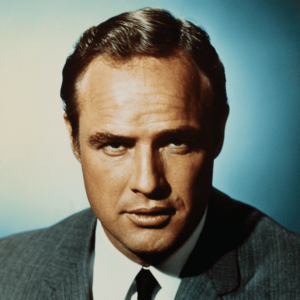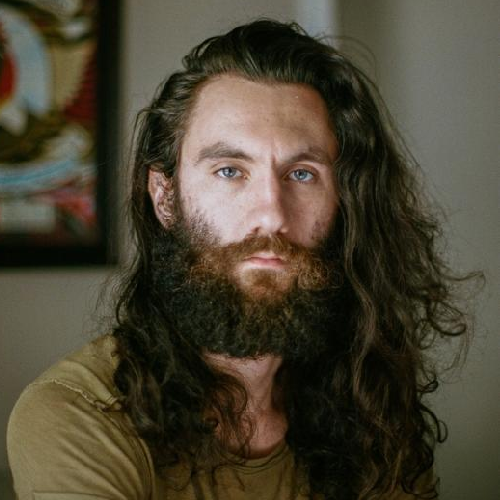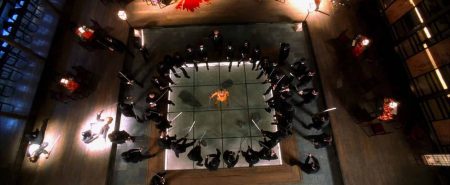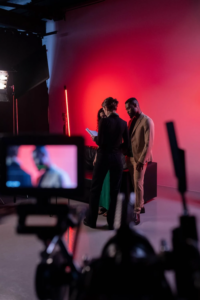
Marlon Brando – Everything You Need To Know
Marlon Brando, Jr. (April 3, 1924 to July 1, 2004) is an American film and stage actor. He is best known for his raw, engaging,
A cinematographer, also called a director of photography, is the crew chief that is responsible for the camera and light crews. Cinematographers are masters of cinematography – the art of visual storytelling used in films and television shows.
Much of the impact of a film or television show is visual. Cinematography represents that visual aspect, whether through the camera and lens choice, angle width, aspect ratio, or other visual elements. The impact of certain shots also plays a significant role in the overall feel of a film. For example, an extremely wide shot places the subject in a more vulnerable position, while a medium shot helps the audience feel like they are part of the conversation. The size of the shot restricts how much of the scene the audience can see.
The role of a cinematographer in filmmaking is crucial in all three stages of production:
The process begins with a discussion with the director to gain a sense of their vision. A cinematographer then determines what each scene needs and hires the camera crew, purchases supplies, and arranges for equipment.
Cinematographers work closely with others on a film set to achieve the right visual outcome, including the lighting department, camera operators, and directors. Cinematographers also utilize various methods to create specific looks for scenes, such as lighting elements, shot sizes and widths, and camera angles.
After filming wraps, a cinematographer works with the processing lab to ensure that the color is retained and the visuals represent the creative vision of the director.
A cinematographer has several major responsibilities and duties when working on a film set. The first is choosing the visual style and approach of the film, which will depend on the story and feel. The next duty is to determine the lighting for each scene. In a film, lighting creates the visual mood for the scene, so a cinematographer must use it to enhance the contour, contrast, and depth of the image to support the atmosphere.
Another key responsibility is establishing the camera setup for each shot. This setup includes the type of camera used as well as the lens, angle, and techniques utilized to bring the scene to life and represent it visually. The vantage point of each camera also factors into the camera setup. Cinematographers are heavily involved with the film from start to finish, and they attend rehearsals to determine the camera setup in response to actions, gestures, body positioning, and blocking done by the actors.
A cinematographer is also responsible for what type of camera will be used to make a film. Some of the decisions include film vs. digital, the type of lenses, the setting of the camera, and any other necessary equipment. The movement of the camera also impacts the outcome of the film, so cinematographers are responsible for planning whether it will move or remain still.
An experienced cinematographer works closely with the director of a film with a goal to elevate the director’s vision, often introducing concepts and ideas that the director may not have previously considered.
Cinematographers often explore each location’s potential, looking for visuals that the director will appreciate and making recommendations to capture specific shots.
A cinematographer often has success when collaborating with similarly creative people. This role involves heavy networking, so those who are introverted or uncomfortable interacting with people they don’t know may struggle.
Becoming a cinematographer doesn’t involve following a single path.
Some pursue educational opportunities, while others gain experience by working with cameras and moving up through roles on a film set.

“NFI secured a project that was being filmed in Nashville. I met the line producer, and that was my intro to legitimate filmmaking!” Eckels
Learn MoreTyler Eckels, Class of 2020
“NFI secured a project that was being filmed in Nashville. I met the line producer, and that was my intro to legitimate filmmaking!” Eckels
In 2021, Eckels had the opportunity to work as a camera operator on the Film American Siege starring Bruce Willis. His strong work ethic and talent combined with the demands of film resulted in Eckels being promoted to 2nd Unit cinematographer.
Eckels seized this opportunity to shine and has now shot 5 more feature films as a camera operator or 2nd Unit cinematographer (including 4 with Bruce Willis and 1 with Mel Gibson). He is now slated to be the primary cinematographer on a television show shooting this winter and a feature film shooting January of 2022.
Camera and Electrical Department
White Elephant (B camera operator) ( filming)
2022 Bandit ( 2nd Unit Cinematographer ) (post-production)
2022 Gasoline Alley ( B Camera Operator ) (post-production)
2021 American Siege ( 2nd Unit Cinematographer ) / ( camera operator ) (post-production)
2021 Reactor (B Camera Operator) (post-production)
Learn more about Tyler at nfi.edu/tyler-eckels OR follow him on Instagram (@thegewse)
If you want to work as a cinematographer, you need to have a passion for the visual representation of life through photography and film. You also need experience in the industry, which you can gain by starting in a lower-level role and working your way up.
Some cinematographers attend film school to gain experience and knowledge about what goes into filmmaking. Other related subjects to study include photography, art, and drama.
Some of the most successful cinematographers apply certain techniques to their craft. They must be able to find creative solutions that achieve the director’s visual goals. These solutions may involve detailed strategies, such as utilizing specialized lighting equipment or bringing in unique tools.

“Blade Runner 2049”

“Se7en”

“Kill Bill”
Many of the best cinematographers learn from one another. Orson Welles, the talent behind “Citizen Kane,” said that he was greatly inspired by John Ford, who invented both the chiaroscuro and western techniques. Some of the other films that are known for their cinematography include “The Immigrant,” “The Tree of Life,” and “In the Mood for Love.”
A cinematographer falls under the U.S. Bureau of Labor Statistics category that includes film and video editors and camera operators.
The median salary for this role in 2019 was $59,810 per year. Experience greatly impacts a cinematographer’s salary. Cinematographers are paid by project.
According to statistics from the BLS, employment opportunities for cinematographers are expected to increase by 11% between 2018 and 2028.
Joining professional organizations and associations can help you network and form connections that will benefit your career. Most professional cinematographers are part of the International Cinematographers Guild. In some areas, cinematographers are also part of a union.
Cinematographers typically work on film sets and studios, although their pre-production and post-production work may include scoping out or work on location or reviewing film in a studio.
A cinematographer often works on a freelance basis, working long days during the production phase.
The progression for cinematographers often begins in a low-level role, such as a camera trainer or second assistant camera operator. Many work their way up through camera operating roles, applying their knowledge of and skills in camera equipment, exposure, lighting, composition, special effects, scene blocking, and development.
You can learn more about cinematography through professional organizations throughout the world or through educational programs .
The best ways to get started in the cinematography industry are researching the field, gaining experience behind the camera, forming connections, and putting together a portfolio of your work.
Learning some of the most commonly used terms in cinematography can also benefit you in your quest to work in this field:
Becoming a cinematographer can be an exciting and rewarding career. Get started today by contacting the Nashville Film Institute.

Marlon Brando, Jr. (April 3, 1924 to July 1, 2004) is an American film and stage actor. He is best known for his raw, engaging,

Virtual production is a technique that combines physical and virtual filmmaking to create cutting-edge media. Teams design photorealistic sets using real-time 3D engines (game engines),

Attending an accredited film school can go a long way toward promoting the overall success of your career as a director, filmmaker, actor, screenwriter, or

Candid photography is a genre of photography that spontaneously captures the organic, genuine, and unposed moments of a subject. Although you may photograph the subject

Photography is the art of capturing light. To photograph your scene effectively, you need to know how light plays in the environment you wish to

Generative AI is a cutting-edge technology that harnesses the power of artificial intelligence to create original and creative content. It learns from vast datasets and

Chekhov’s gun is ubiquitous in the world of filmmaking. But, what is Chekhov’s Gun? Chekhov’s gun is a storytelling theory that states that every element
“Abandoned” Premiering on Amazon Prime Congratulations to NFI’s very own graduating student, Christy Okugo (@christyjtv) whose new film, “Abandoned”, is premiering on Amazon prime! Chinonso

NFT Profile Picture is a new DeFi Wallet feature that allows users to use NFTs they own as profile pictures. So, how do you project
Nature photography is a terrific tool that helps you immortalize the fleeting moment before you. As a photographer and a nature enthusiast, you might encounter

Photography is not just about clicking and capturing. It is an art you can hone if you are well-versed in the craft of photography. A

Montage is a cinematic technique that condenses space, time, and information by sequencing a series of brief shots. The capability to edit and rearrange images

Sound design is the art of creating the audio for film, television, advertising, music, and other productions. This broad field involves: Creative recording Mixing Sampling

Who is a Film Producer? A film producer is responsible for finding and launching projects, arranging finance, hiring writers, a director, and a creative team,

If you want to learn how to write a spec script, you need to develop a deep understanding of the structure, format, and art of

The structure of a screenplay is an essential component of creating a compelling story. The structure involves standard formatting requirements as well as different ways
Congratulations to NFI’s very own graduating student, Christy Okugo (@christyjtv) whose new film, “Abandoned”, is premiering on Amazon prime! Chinonso Christiana Okugo, the creator ChristyJ Tv,

Non-Fungible Tokens have recently been the talk, and the internet is going wild about it. The rise of NFTs is a signal for revolution in